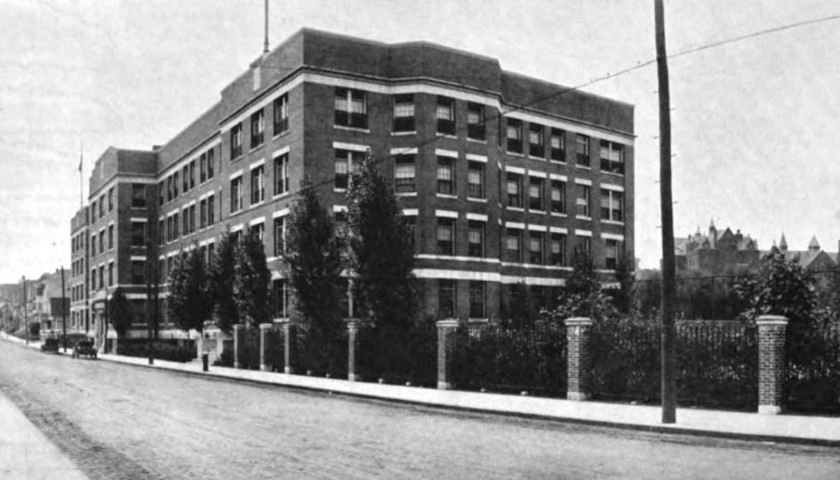by Bradley Thomas
Progressive ideology focuses on the “common good” while devaluing individual rights. This mindset, however, has disturbing consequences: when you elevate the “common good” over the rights of individuals, individuals become expendable.
Such a mindset can lead to some disturbing practices.
Eugenics and the Progressive Era
Indeed, American progressives in the Progressive Era had quite an affinity for eugenics as a means to improve the stock of society by “scientific” means of control.
Princeton University scholar Thomas C. Leonard documents this in his 2016 book Illiberal Reformers; Race, Eugenics & American Economics in the Progressive Era.
The Progressive Era in America is typically recognized as the three to four decades after 1890. Eugenics is commonly referred to as a movement to “improve human heredity by the social control of human breeding.”
During the Progressive Era, Leonard notes, it was quite fashionable in scholarly circles to openly discuss eugenics. “In 1928, 376 college courses were dedicated to the subject of eugenics,” he wrote. During that time, popular economist Irving Fisher co-founded the American Eugenics Society, which was accompanied by the American Race Betterment Society established in 1906 and the American Breeders Magazine that began publication in 1910.
“Hundreds, perhaps thousands of Progressive Era scholars and scientists proudly called themselves eugenicists,” Leonard observed.
The state of Indiana, reported Leonard, passed its forcible sterilization law in 1907, “the first of more than thirty American states to do so.” Included among them was New Jersey’s forced sterilization law signed by then-governor and future president Woodrow Wilson. That law targeted “the hopelessly defective and criminal classes.”
The Targets of Eugenicists
Progressives of the time believed that “human heredity must be socially controlled rather than left to individual choice,” wrote Leonard. “Over 20,000 Americans were forcibly sterilized between 1931 and 1939, more than triple the number sterilized between 1920 and 1929.”
Which populations were popular targets of Progressive Era eugenicists?
In the Progressive Era, it was assumed that human hierarchies were to be determined by scientific experts. The experts were to rank various groups from best to worst, not just in terms of race but also gender, class intellect, and moral character.
Progressives of that era developed a lengthy list of undesirables. This included “degenerate Anglo-Saxon hill clans, immigrants from southern and eastern Europe and Asia, backward peoples in the territories of the new American empire, African Americans, the feebleminded, [and] the epileptic” among many others, Leonard reported.
Emblematic of the times, Richard T. Ely, a leader of the Progressive movement who taught at Johns Hopkins, Wisconsin, and co-founded the American Economic Association, described blacks in condescending terms: “Negroes, are for the most part grownup children, and should be treated as such.”
“Unemployables” was a term coined by British Fabian socialists Sidney and Beatrice Webb for these groups considered “inferior.” It included people who were indeed employed but who accepted wages below a standard the reformers deemed acceptable.
Those particularly singled out as willing to work for less were foreign immigrants, blacks, and the “feebleminded.”
Eugenics took on other forms apart from race, as well. Certain portions of the poor were deemed “unworthy,” and charity was lamented as a “shelter under which idiots and cretins have crept and bred,” Leonard wrote.
Progressives believed that certain traits were inherited biologically, including behavior like alcoholism, smoking, poor work ethic, and other vices. People in these categories were also deemed “unfit” and, as such, also needed to be targeted.
Social Darwinism Not Acceptable—Control Needed
The Darwinian notion of natural selection and “survival of the fittest” was producing unacceptable results, according to the Progressive eugenicists.
Ely compared human evolution to that of plants. Natural selection in nature, Ely noted, gave us weeds as well as nutritious food plants. Conversely, artificial or scientific selection improved upon nature. The “human garden,” according to Ely, was inefficient in natural selection and gave us too many unfit survivors—human “weeds,” if you will. But society, under conscious hereditary management, can give us “the ideal man,” insisted Ely.
“The great word is no longer natural selection, but social selection,” Ely declared.
In other words, Progressives did not reject the concept of selection per se, they merely preferred controlled selection rather than natural selection.
Much of the eugenicists’ fear stemmed from the observation that the “undesirables” and “unemployables” were willing to work for lower wages. In response, the “superior” stock of workers—whose wages were forced down due to this labor competition—could afford fewer children while maintaining their living standards.
As a result, the inferior stock of people would outbreed the superior stock, dragging down the overall quality of the population. Because of this, Progressives of the time believed that “human heredity must be socially controlled rather than left to individual choice,” according to Leonard.
So, what was to be done to avoid this evolutionary race to the bottom?
The choice really boiled down to either trying to uplift the “inferior” and “undesirables” or to weed them out. Their choice was tragic. As Leonard wrote: “Uplift was socially costly. Eugenics was cheap. When society prevented the unfit from being born, there were fewer of them to uplift.”
How to Segregate and Isolate?
Because natives could not maintain their standard of living while supporting large families, Progressives maintained, the result would be fewer native children. In this way, it was postulated, the inferior races would outbreed the superior stock.
This process was often referred to as “race suicide,” a process whereby the native population would be overwhelmed by the import and more prolific breeding of the inferior stock of immigrants.
The question for progressive eugenicists then became one of how to identify the “defectives and feeble-minded” in the American workforce, guilty of driving down wages for the superior stock and causing race suicide.
Progressives devised a “wage test,” a means to “catch all inferiors with low standards, the unemployable, the immigrant and the woman,” as Leonard described.
“A legal minimum wage, applied to immigrants and those already working in America, ensured that only the productive workers were employed,” he added.
Leonard continued:
For economic reformers who regarded inferior workers as a threat, the minimum wage provided an invaluable service. It identified inferior workers by idling them. So identified, they could be dealt with. The unemployable would be removed to institutions, or to celibate labor colonies.
Labor colonies indeed became one destination of the unemployables. New York state established the first American labor colony in 1911. It was hailed by Progressives as a “humane method of keeping the unemployables out of labor markets,” wrote Leonard.
Once isolated into labor colonies, the next step was sterilization.
Why Did Eugenics Appeal to Progressives?
In his 2005 essay “Eugenics and Economics in the Progressive Era,” published in the Journal of Economic Perspectives, Leonard addressed the question of why Progressives were drawn to eugenics.
Because they conceived of “society” as being “prior to and greater than the sum of its constituent individuals,” wrote Leonard, progressives legitimized social control of the highest order.
The rise of state power at the time alerted Progressives to recognize the state as that institution powerful enough to capably implement their desired control.
“As eugenics historian Diane Paul writes, eugenics legislation had to await ‘the rise of the welfare state,’” Leonard wrote.
There’s little doubt that Progressives’ desire to grow and utilize the state to exert greater control over society dovetails with the plans of eugenicists. As Sidney Webb said, “[N]o consistent eugenicist can be a ‘Laissez Faire’ individualist unless he throws up the game in despair. He must interfere, interfere, interfere!”
Progressives had a commitment that the state, not nature, could select society’s “fittest.”
And as so many statist interventions and controls are justified by the claim “it’s for the common good,” so too was eugenics.
Eugenics eventually fell out of favor, according to Leonard, largely due to scientific difficulties of clearly defining the “unfit.” Their definitions expanded over time and began to include complex traits far more difficult to trace. A growing acknowledgment by social scientists of the influence of environmental factors in human development further eroded the eugenics movement.
Conclusion
The history of eugenics in America, as well as other nations, stands as a contemptible reminder of what can happen when an ideology marginalizes the rights of the individual in favor of the collective. A self-anointed elite, combining the conviction that society can be managed by human controls with the hubris that they are the ones capable of exerting such control, implements policies that horrifically erode personal liberty.
– – –
Bradley Thomas is creator of the website Erasethestate.com and is a libertarian activist and writer with nearly 15 years experience researching and writing on political philosophy and economics. Follow him on Twitter: ErasetheState @erasestate.




